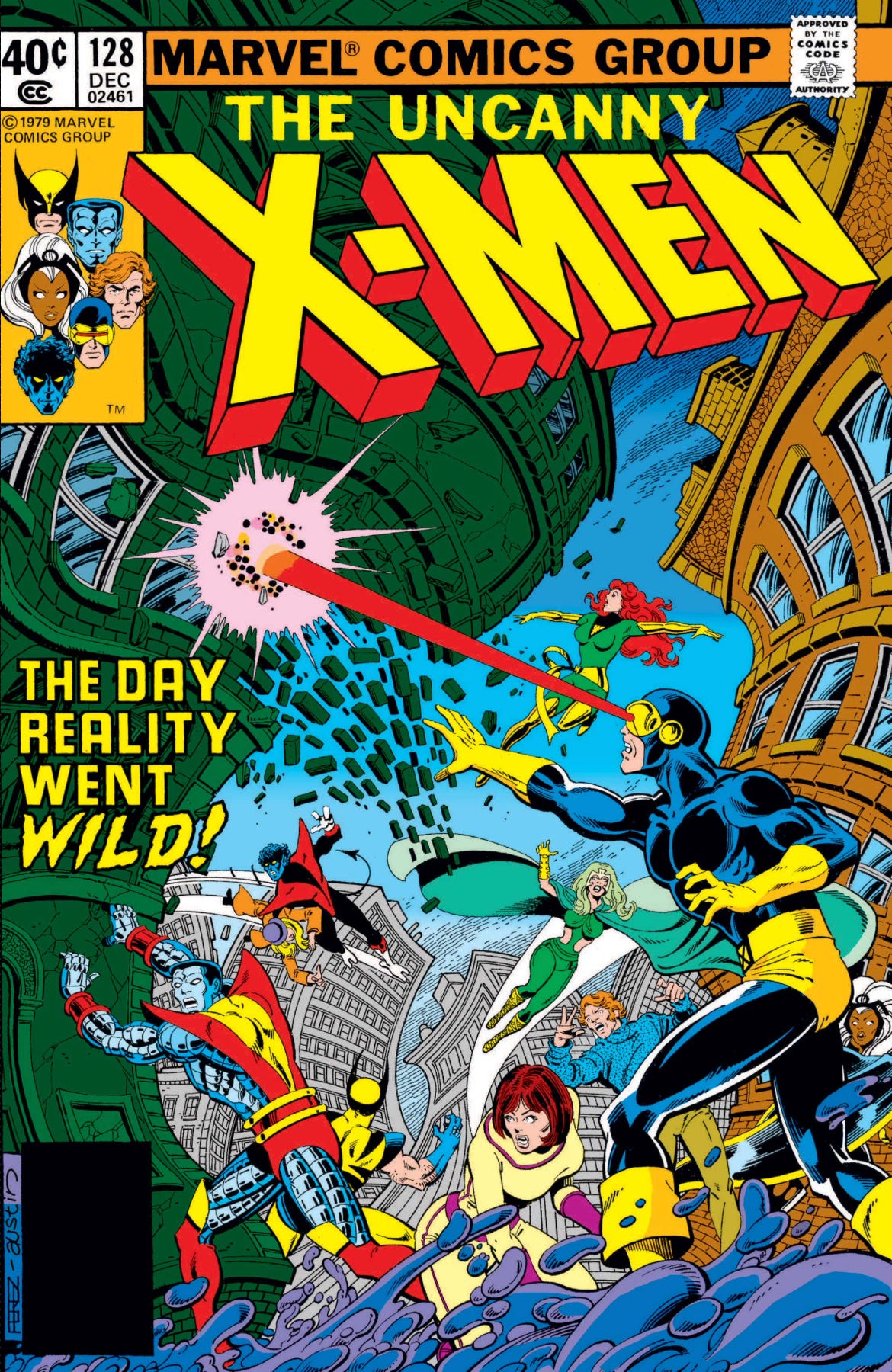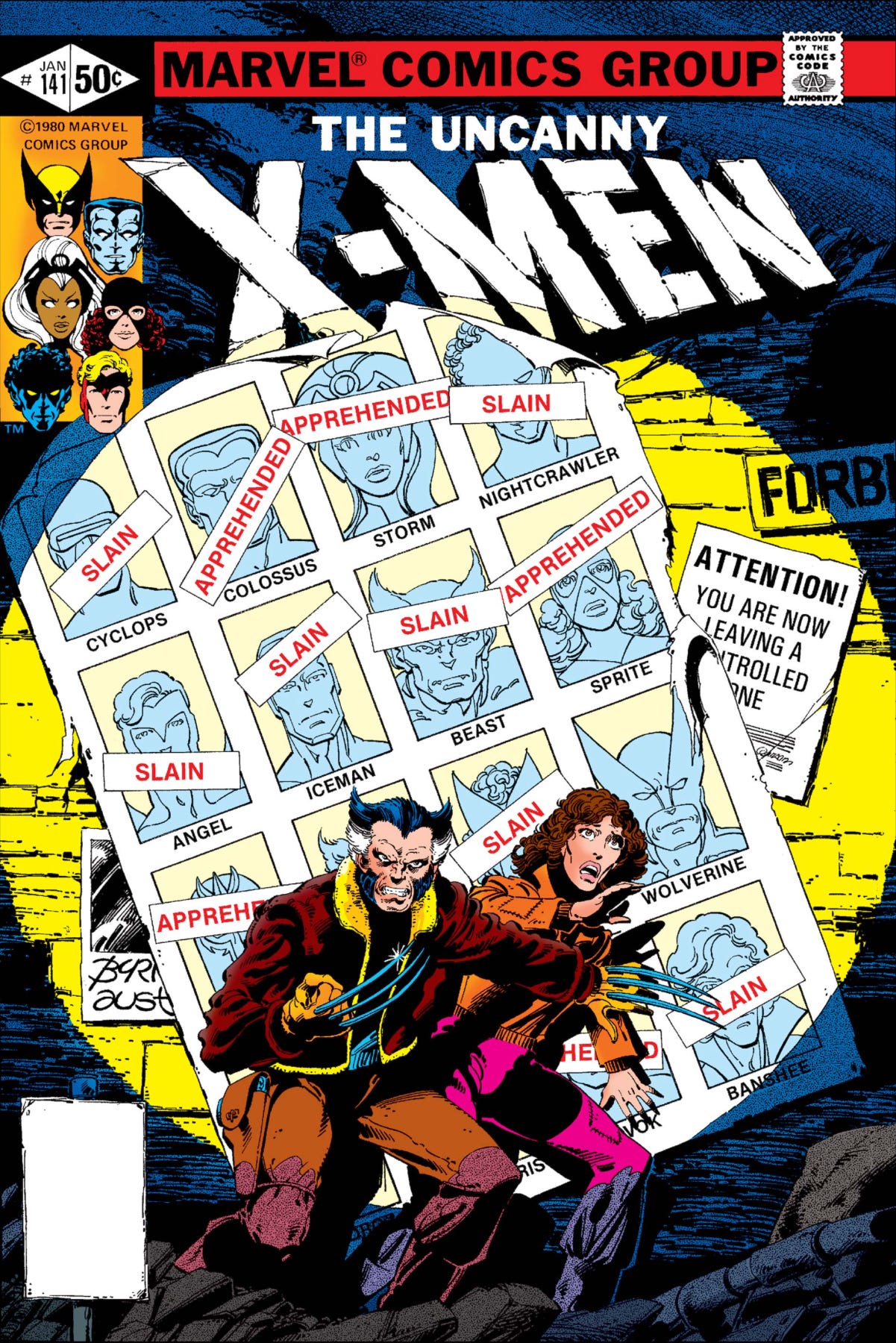Marvel's Top Ten Stories: 1976-1980
Shouldn't be hard to guess which title dominates this list.
Previously … I ranked the best of 1961-65, 1966-70, and 1971-75.
I wasn’t born yet during this half-decade, but I’m quite fond of many Marvel comics that came out of it. After all, this is the era that relaunched the X-Men and elevated them to greatness with a long string of all-time classic issues.
It should come as no surprise, then, that X-Men stories dominate half this list. But what non-X books make the cut for the other half?
10) Avengers Annual #7, Marvel Two-In-One Annual #2 (by Jim Starlin)
Before Infinity Wars and Endgame, there was the comic The Infinity Gauntlet, and before that, there were these issues, which also provide the sequel to Captain Marvel’s “Thanos War” storyline and the conclusion to Warlock’s long-running saga. Thanos has collected most of the Infinity gems (known as “soul gems” at this point), and he sets out to destroy the sun in order to win the favor of Death herself. The Avengers, Captain Marvel, Moondragon, and Warlock head into space to stop him. Great cosmic action ensues in an epic tale about life and death.
Spider-Man and the Thing join the action in the second part, and Spidey’s presence in particular brings the human perspective to the mix. He’s out of his league. He’s scared. He even panics at one point. And that makes his contributions all the more heroic.
9) The Avengers #164-166 (by Jim Shooter and John Byrne)
It’s the Avengers vs. Count Nefaria, but one little complication: he’s got Superman-like powers now.
The storyline features all-out action against an immensely powerful foe who craves immortality. Defeating such a menace will require the teamwork of Earth’s mightiest heroes. The problem—or another problem, rather—is the internal tension that puts the Avengers off their A-game.
This one has all the elements of a thrilling old-school Avengers storyline: high stakes, a formidable threat, fast-paced action, and, most importantly, interesting character dynamics. Add that all together and you’ve got pure fun for comics fans young and old.
8) Daredevil #163 (by Roger McKenzie and Frank Miller)
Daredevil was already recovering from years of mediocrity even before Frank Miller started writing the book and elevated it further. Issue #163 is a great example, with a very down-to-earth story that demonstrates the real measure of the title character.
The Hulk shows up in New York, and he’s confronted by … Matt Murdock, in formalwear. Ultimately, Matt just wants to help the Hulk, not fight him. He empathizes with the innocent man within the beast, and he understands how easily a Hulk situation can spiral out of control. So he needs to get the Hulk to calm down, then needs to help Bruce Banner get out of town. And he almost succeeds.
Things go south when Banner hulks out again, and Daredevil realizes that he might be the only person who has a prayer of defusing the situation before it gets worse. Of course, one very human Man Without Fear is nowhere near the Hulk’s weight class.
Pretty much everything you need to know about Daredevil’s character is shown right here in one excellent issue.
7) X-Men #98-100 (by Chris Claremont and Dave Cockrum)
The first great storyline of the X-Men’s “All-New, All-Different” relaunch. It begins as any good X-Men story should, with the team enjoying some downtime, just trying to live their lives, until the world’s fear and hatred get in their way … this time in the form of mutant-hunting Sentinel robots.
The Sentinels capture Jean Grey, Wolverine, and Banshee, who then must fight their way through bigots and robots. They’ve been abducted to a facility at an unknown location, which proves to be much farther from home than they thought.
Part of the X-Men’s success has involved mixing and matching great characters and watching them play off each other. The first issue gives an early example of that by pulling together three X-Men who had hardly ever functioned as a team.
This would have been a solid anniversary storyline to culminate in the 100th issue, complete with facsimile robots of the original team, but the final three pages bring it to the next level. The highly emotional scene, featuring a great heroic act from Jean, portends just how amazing X-Men is going to get.
6) Daredevil #168 (by Frank Miller)
Frank Miller’s writing debut barely sneaks into this five-year period. True, the best comes later, but this is a strong start, a fantastic introduction to a pivotal new character, and a great example of a retcon that works. Matt Murdock’s first great love, neither mentioned nor even hinted at for 167 issues, suddenly emerges in issue #168.
Matt met Elektra in college, when she was the overprotected daughter of an ambassador. And, showing just how human he is, Matt threw caution to the wind and showed off his athletic prowess and hyper-senses to impress the girl. Tragedy separated them then, but now Elektra reenters his life—by throwing her sai against the back of his head.
Daredevil’s ex-girlfriend has become a highly skilled bounty hunter. Further conflicts between the two are inevitable. But here’s what’s key: Miller’s script and art show how they both still care for each other, even after all these years. And the richer the emotions, the richer the conflicts.
5) X-Men #111-114 (by Chris Claremont and John Byrne)
The classic Claremont/Byrne collaboration began a few issues earlier, but this is where it really kicks into high gear, never losing momentum from here on out. Right off, we’re dropped into the middle of a mystery, with X-Man-turned-Avenger Hank McCoy serving as our very confused viewpoint character for part one. The Beast finds the new X-Men performing as carnival freaks and investigates.
And that’s merely our starting point. This little misadventure with Mesmero soon turns into a memorable confrontation with an especially villainous Magneto. He places the X-Men in a creative and cruel trap, leaving them physically helpless and babied by a robotic nanny day after day. This sets the stage for a highly satisfying battle within a volcano, one that leads directly into the next exciting stories.
It’s pretty much all greatness from here on out for the Claremont/Byrne team.
4) Iron Man #120-121, 123-128 (by Bob Layton, David Michelinie, and John Romita Jr.)
Iron Man faces his most insidious foe yet: alcohol. This could easily have veered into “after-school special” territory, and it does come close toward the end, but the storyline succeeds by weaving the alcoholism plot throughout several issues of otherwise normal (and very strong) Iron Man issues. Tony doesn’t immediately become an alcoholic in part one. His drinking gradually escalates, as do the detrimental effects.
At the beginning of #120, a stewardess asks Tony if he’s sure he wants another martini, and Tony quips to himself that he’s drinking for two. While fighting the Sub-Mariner, he wonders if he maybe should have had one less drink, but his Iron Man performance is mostly unimpaired. So far.
Issue after issue, stresses mount, cracks spread, and Tony’s drinking increases, becoming a problem without his realizing it.
Another plotline involves Justin Hammer seizing remote control of the Iron Man armor, which provides an appropriate metaphor for Tony’s internal struggle. And it’s fitting that regaining control of the armor proves much easier than regaining control of himself.
3) X-Men #125-128 (by Chris Claremont and John Byrne)
The X-Men confront their—and the world’s—worst nightmare: an immensely powerful mutant who lacks a conscience. To compound matters, this mutant is the son of the X-Men’s closest human confidant, Moira McTaggart.
Reality-warping Proteus pushes the X-Men to the limit. Even Wolverine is rattled. The tension never lets up until the end, and this gauntlet demonstrates just how human, and strong, they truly are. Cyclops is in full leader mode, willing to do whatever is necessary to end the threat. Banshee, recently depowered, just wants to save his girlfriend. Colossus, confronted with pure evil for the first time in his young life, crosses a line he never thought he’d need to. And all along, Moira understands that despite her best efforts over the years, her son is unwilling to be saved.
The story shows how evil doesn’t just come of nowhere, and sometimes, its origins are closer than we’d like to think. Proteus chose to focus on his father’s hatred rather than his mother’s love, and that tragic decision endangers everyone.
2) X-Men #141-142 (by Chris Claremont and John Byrne)
Dystopian alternate-reality futures can easily wind up feeling inconsequential—like elaborate “what if?” scenarios. But in “Days of Future Past,” events matter. That’s kind of the whole point.
Present and future run along parallel tracks throughout both issues. The future shows how everything has gone wrong, and the present is where a time-traveling visitor makes a last-ditch effort to set events on a better path.
Present-day X-Men face off against the new Brotherhood of Evil Mutants in a fun showdown, with an anti-mutant senator’s life in the balance. The battles also features Storm’s first outing as team leader, and we see Kitty Pryde’s untapped potential as future Kate Pryde takes control of her younger self.
“Meanwhile” … the few remaining future X-Men, with little left to lose, wage their desperate last stand against the Sentinels. Their deaths are all the more tragic because their world should never have reached such a bleak state in the first place.
These two issues make full use of the X-Men’s core premise to fashion a cautionary tale about how important the actions of today are.
1) X-Men #129-137 (by Chris Claremont and John Byrne)
“The Dark Phoenix Saga” isn’t just the best storyline of this five-year period; it’s easily one of the best comic book storylines of all time, showing off the medium and the superhero genre at their best. Superhero stories excel when they balance the epic and the personal, the fantastic and the mundane. Saving the world means a lot less if we neglect the characters populating that world.
These nine issues take us through an incredible run of comics. New characters: Kitty Pryde and Dazzler make promising debuts in the relatively quiet early issues. New villains: The Hellfire Club immediately prove themselves to be formidable adversaries. Old villain: Original Brotherhood of Evil Mutants member Mastermind comes into his own with his gradual corruption of Jean Grey. Ongoing subplots: Jean acquired cosmic-level power nearly thirty issues earlier, and the payoff is imminent. Romance: Scott and Jean are reunited after a long separation and are more in love than ever. Iconic solo action: Wolverine continues to solidify into the Logan we all know and love as he’s let loose against the Hellfire Club. And so much more.
But at the core of all this is Jean Grey and her struggle to avoid being corrupted by her newfound power. And she fails—worse than any Marvel character has failed before or probably since. In her power-fueled madness, she consumes a star and destroys a planet populated by billions. An irredeemable action, but who’s responsible? Jean or the Phoenix force?
The X-Men choose to believe in Jean’s inherent goodness, and they put everything on the line in order to save their friend. Saving their friend is saving the universe. But in the end, Jean herself knows what really needs to be done, and what only she can do. In doing so, she justifies the faith her friends put in her.
There might be better comics out there, but if so, you can count them on one hand.
Next: the best of 1981-1985.
















This is a great list. I love how you focused on small, digestible stories rather than recommend expansive runs or complicated crossovers that are hard to pull together.
I always thought it was Denny O'neil who wrote Tony Stark's battle againt the bottle